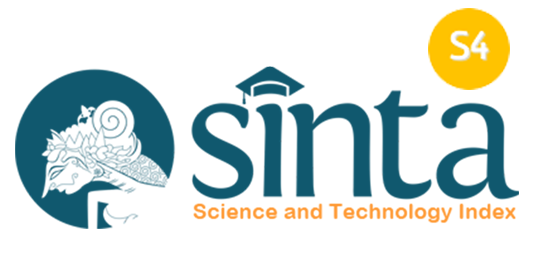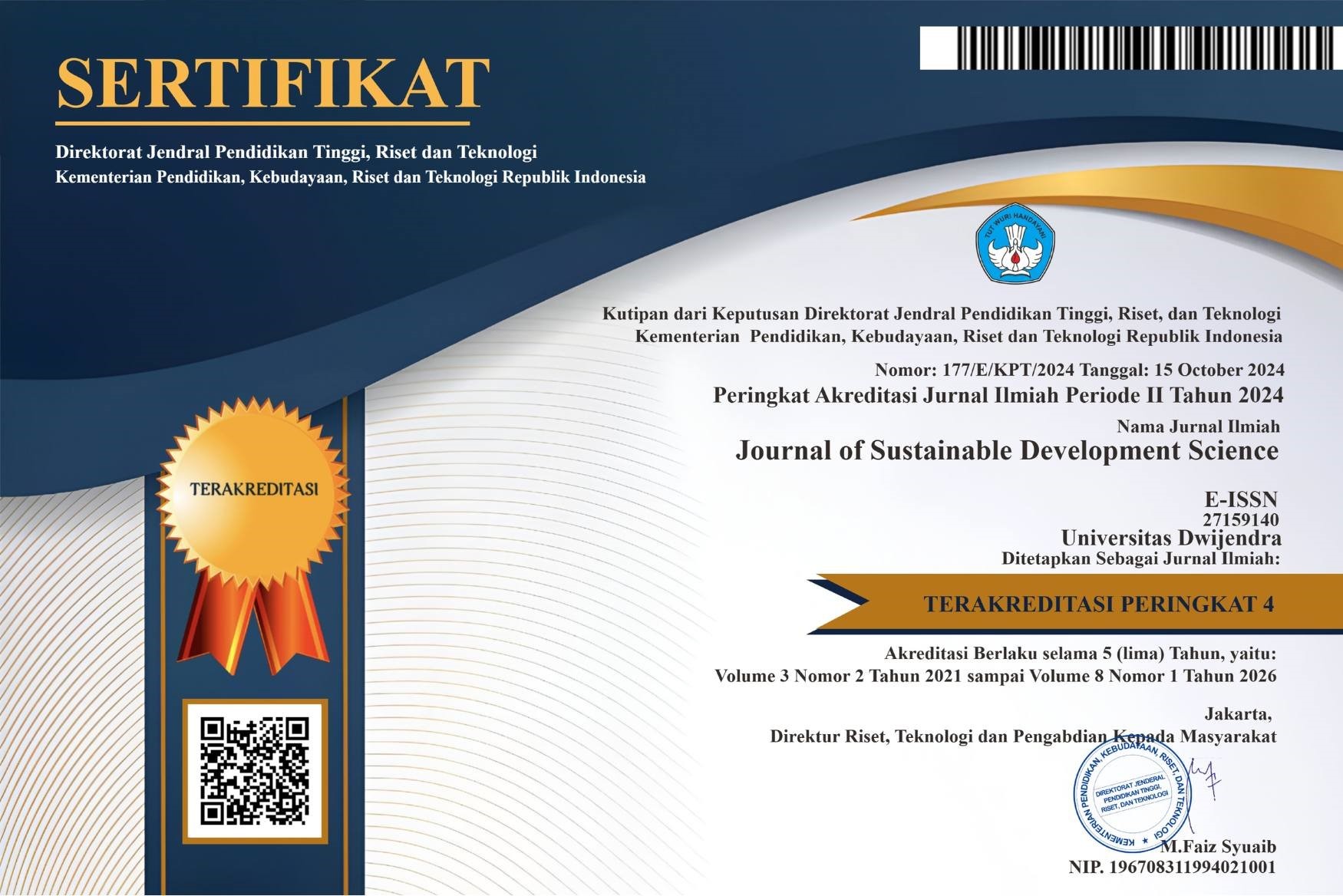Income Analysis and Risk Identification in Garlic Farming at Subak Aya Babahan, Babahan Village, Penebel District, Tabanan Regency
DOI:
https://doi.org/10.46650/jsds.7.1.1689.10-18Keywords:
Garlic, Subak Aya Babahan, income analysis, risk identification, risk mitigationAbstract
References
Badan Pusat Statistik Kabupaten Tabanan. (2023). Vegetable Crop Production by District and Type of Crop in Tabanan Regency
Gaspersz, V. (2002). Guidelines for Implementing Integrated Six Sigma Programs with ISO 9001. Gilarso. (2003). Introduction to Microeconomics. Yogyakarta: Kanisius Publisher.
Ministry of Agriculture. (2020). Outlook for Garlic, an Agricultural Commodity in the Horticulture Subsector.
Ministry of Agriculture of the Republic of Indonesia. (2020). Second Amendment to the Decree of the Minister of Agriculture Number 259/KPTS/RC.020/M/05/2 020 Concerning the Strategic Plan of the Ministry of Agriculture for 2020-2024.
Naftaliasari, T., Abidin, Z., & Kalsum, U. (2015). Risk Analysis of Soybean Farming in North Raman District, East Lampung Regency. in Jiia (Vol.3, Issue 2).
Pitaloka, D. (2017). Horticulture: Potential, Development and Challenges.
Puspitasari, N. B., & Martanto, A. (2014). The Use of FMEA in Identifying the Risk of Failure in the Production Process of Atm Sarong (Machine Weaving Tool) (Case Study of PT. Asaputex Jaya Tegal). In J@TI Undip: Vol. IX (Issue 2).
Putri, A. S., Hanum, E., Djunaidi, M., Nugraha, I., & Syaifullah, H. (2023). Improving the Quality of the Writing Book Printing Process: FMEA and Fishbone Diagram Approach. Waluyo Jatmiko Proceeding, 231–240.
Salsabila, Z., Rohmah, F., & Arisandi, D. (2024). Impact of Climate Change on Farming and Food Sustainability in Reban Village, Reban District, Batang Regency. Sahmiyya Journal.
Saragih, L. S. (2007). Analysis of Farming Income and Marketing of Arabica and Robusta Coffee (Case Study in Tambun Raya Village, Simalungun Regency, North Sumatra Province).
Supiandi, D., Yusworo Haryono, H., & Tobing, C. (2021). Journal of the National Resilience Institute of the Republic of Indonesia FMEA and Fishbone Analysis to Determine the Risk of Flight Control System Components Defect Doe to Aircraft Vibration on the Indonesian Navy Helicopter Bell-412.
Suratiyah, K. (2006). Agricultural Business Science Revised Edition. Jakarta: Penebar Swadaya. Suratman, A. Y. Y. (2015). Contribution of Labor in the Family to the Income of Eggplant Farming (Solanum Melongena L.) in Landasan Ulin Utara Village, Liang Anggang District, Banjarbaru City. Ziraa’ah, 40(3).
Soekartawi. (1995). Farming Business Analysis. Jakarta: Ui Press. Syarifuddin. A. Kasim. (1995). Introduction to Production Economics. Faculty of Agriculture, Unlam. Banjarbaru.
Ulfa, R. (2018). Analysis of Garlic Farming (Allium Sativum L) and Its Problems in Salayo Tanang Bukit Sileh Village, Lembang Jaya District, Solok Regency.
Windia, W., Widnyani, & Ambarawati. (2015). Sustainability of Organic Liquid Fertilizer Business PT Alove Bali Saba Village, Blahbatuh District, Gianyar Regency. Journal of Agribusiness Management, 3(1).
Zikria, R., & Damayanti, A. (2019). The Role of Agricultural Extension and Risk Preferences for Excessive Fertilizer Use in Rice Farming. Journal of Agro Economy, 37(1), 79. Https://Doi.Org/10.21082/Jae.V3 7n1.2019.79-94












